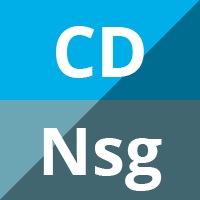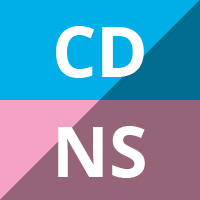
Cerebral near-infrared spectroscopy (NIRS) for perioperative monitoring of brain oxygenation in children and adults
Abstract Background Various techniques have been employed for the early detection of perioperative cerebral ischaemia and hypoxia. Cerebral near-infrared spectroscopy (NIRS) is increasingly used in this clinical scenario to monitor brain oxygenation. However, it is unknown whether perioperative cerebral NIRS monitoring and the subsequent treatment strategies are of benefit to patients. Objectives To assess the […]

Yoga for stroke rehabilitation
Abstract Background Stroke is a major health issue and cause of long-term disability and has a major emotional and socioeconomic impact. There is a need to explore options for long-term sustainable interventions that support stroke survivors to engage in meaningful activities to address life challenges after stroke. Rehabilitation focuses on recovery of function and cognition […]

Virtual reality for stroke rehabilitation
Background Virtual reality and interactive video gaming have emerged as recent treatment approaches in stroke rehabilitation with commercial gaming consoles in particular, being rapidly adopted in clinical settings. This is an update of a Cochrane Review published first in 2011 and then again in 2015. Objectives Primary objective: to determine the efficacy of virtual reality […]

Direct oral anticoagulants versus warfarin for preventing stroke and systemic embolic events among atrial fibrillation patients with chronic kidney disease
Abstract Background Chronic kidney disease (CKD) is an independent risk factor for atrial fibrillation (AF), which is more prevalent among CKD patients than the general population. AF causes stroke or systemic embolism, leading to increased mortality. The conventional antithrombotic prophylaxis agent warfarin is often prescribed for the prevention of stroke, but risk of bleeding necessitates […]

Treadmill training and body weight support for walking after stroke
Abstract Background Treadmill training, with or without body weight support using a harness, is used in rehabilitation and might help to improve walking after stroke. This is an update of the Cochrane review first published in 2003 and updated in 2005 and 2014. Objectives To determine if treadmill training and body weight support, individually or […]

Occupational therapy for adults with problems in activities of daily living after stroke
Abstract Background A stroke occurs when the blood supply to part of the brain is cut off. Activities of daily living (ADL) are daily home-based activities that people carry out to maintain health and well-being. ADLs include the ability to: eat and drink unassisted, move, go to the toilet, carry out personal hygiene tasks, dress […]

Early supported discharge services for people with acute stroke
Abstract Background People with stroke conventionally receive a substantial part of their rehabilitation in hospital. Services have now been developed that offer people in hospital an early discharge with rehabilitation at home (early supported discharge: ESD). Objectives To establish if, in comparison with conventional care, services that offer people in hospital with stroke a policy […]

Circuit class therapy for improving mobility after stroke
Abstract Background Circuit class therapy (CCT) offers a supervised group forum for people after stroke to practise tasks, enabling increased practice time without increasing staffing. This is an update of the original review published in 2010. Objectives To examine the effectiveness and safety of CCT on mobility in adults with stroke. Search methods We searched […]

Antithrombotic treatment after stroke due to intracerebral haemorrhage
Abstract Background Survivors of stroke due to intracerebral haemorrhage (ICH) are at risk of thromboembolism. Antithrombotic (antiplatelet or anticoagulant) treatments may lower the risk of thromboembolism after ICH, but they may increase the risks of bleeding. Objectives To determine the overall effectiveness and safety of antithrombotic drugs for people with ICH. Search methods We searched […]

Interventions for treating anxiety after stroke
Abstract Background Approximately 20% of stroke patients experience clinically significant levels of anxiety at some point after stroke. Physicians can treat these patients with antidepressants or other anxiety-reducing drugs, or both, or they can provide psychological therapy. This review looks at available evidence for these interventions. This is an update of the review first published […]

